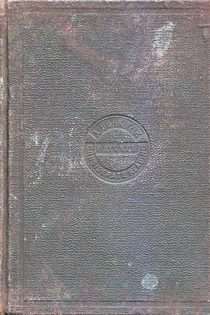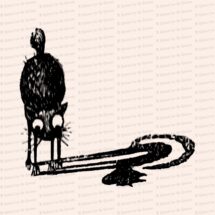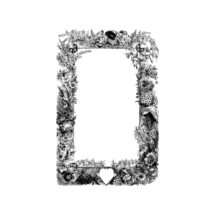This is the last in a five part series on the physiognomical vital and non-vital temperaments and rules for marriage, excerpted from Plain Home Talk by Edward B. Foote, M.D., 1894.
It should not be inferred by the non-professional mind, because I have given female illustrations of the sanguine and lymphatic temperaments, that these especially appertain to that sex, or that the bilious and encephalic, exhibit characteristics found exclusively among men. Each sex shares with the other in manifestations of different temperaments. They are only so presented to give variety to the illustrations. Now, in all cases where the temperament is nearly or quite pure, or marked, any intelligent reader can judge for himself or herself, who would be a compatible companion by observing the following rules: —
RULE FIRST. — The non-vital temperaments should not intermarry. That is, a person of the lymphatic temperament, should not marry one of the same temperament, or one of the encephalic temperament. Reversed, an individual of the encephalic temperament, should not marry one of the same, or one of the lymphatic temperament. I thus turn the rule about, so that it cannot be misunderstood by those of the dullest comprehension. A violation of this rule produces the following results: –In course of time dissatisfaction with each other, and a longing for the society and physical contact of those who are physically better adapted; barrenness, or in many more cases, what is worse, miscarriages or children who die in infancy or childhood, or at the outside soon after reaching adult age. These penalties are inevitable if two persons of clearly marked non-vital temperaments come together in marriage. The designation “non-vital” does not signify that those possessing either of the temperaments coming under this head may not themselves be healthy and long-lived; but it does mean that when united in marriage they cannot impart vital tenacity to offspring.
RULE SECOND. — The intermarriage of the vital temperaments, to the extent that one of the bilious temperaments may unite with one of the sanguine, is admissible, though not as favorable as the marriage of one of these temperaments with one having a good share of one of the non-vital temperaments. The marriage of one of the sanguine with another of the sanguine, or one of the bilious with another of the bilious temperaments is incompatible. The penalty for the violation of this rule is mutual dissatisfaction, sooner or later, between husband and wife, and the production of offspring liable to inflammatory, nervous, and febrile diseases, nor is longevity usually characteristic of the offspring of this sort of marriage. When neither of the non-vital temperaments is exhibited on one side, it will found that the offspring have too much intensity, and where this quality exists excessively, it makes the constitution less enduring, and the children of such parents are more subject to nervous disorders and lunacy.
RULE THIRD. — If of the sanguine temperament, marry one having one-third or more of either of the non-vital temperaments, the balance being of the bilious; if of the bilious temperament, marry one having at least one-third of either of the non-vital temperaments, the balance being of the sanguine. If of the lymphatic temperament, marry one having not less than one-half of one or both of the vital temperaments, with eyes, hair, and skin of opposite complexion to your own; if of the encephalic temperament, marry one having not less than one-half of one or both of the vital temperaments, with complexion of hair, eyes, and skin opposite your own.
The foregoing rules would seem to be plain enough for a guide in cases where there is not too much of a combination of all the temperaments in one person. In some cases the combinations may be such that a novice could not, if his life depended upon it, tell which one of the temperaments predominated in any given case of this class.























You must be logged in to post a comment.